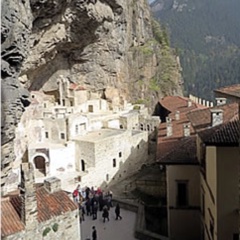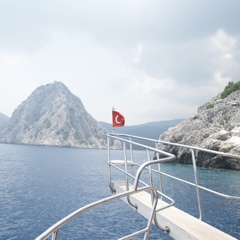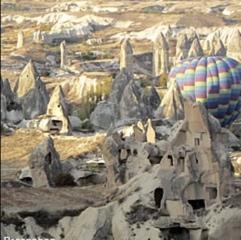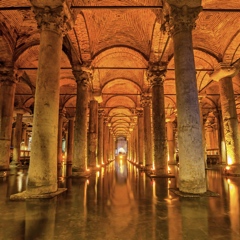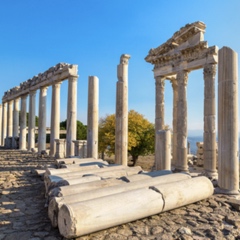Starting as a small warrior band raiding the Byzantine frontier, the Ottoman Turks built an empire from Morocco to Iran, from the deserts of Iraq and Arabia to the gates of Vienna.
As the power of the Seljuk Turkish Sultanate of Rum weakened in the late 1200s, warrior chieftains claimed the lands of northwestern Anatolia bordering on the Byzantine Empire.
Ertuğrul Gazi (EHR-too-rool gah-zee) ruled the lands around Söğüt, a town between Bursa and Eskişehir. Upon his death in 1281 his son Osman, from whom the empire took its name, expanded the territory to 16,000 square kilometers.
Osman’s son Orhan conquered İznik (Nicaea) and took his armies across the Dardanelles and into Thrace and Europe by 1362.
By 1452 the Ottomans controlled almost all of the former Byzantine lands except the great “Second Rome” of Constantinople. In 1453 Mehmet the Conqueror took the city and made it his capital, extinguishing the 1100-year-old Byzantine Empire forever.
The reign of Süleyman the Magnificent(1520-1566) was the Ottoman golden age. The brilliance of the sultan’s court and the might of his armies outshone those of England’s Henry VIII, France’s François I, and Holy Roman Emperor Charles V.
But after Süleyman, it was all downhill as a succession of more or less incompetent sultans depended upon their Grand Vezirs (prime ministers) to run the empire.
The Ottoman sultanate lasted for over 600 years, but its last three centuries were marked by stagnation and decline. By the 1800s the Ottomans had fallen far behind the rest of Europe in science, technology, industry, education, commerce and military might.
Reformist sultans such as Selim III (1789-1807) and Mahmut II (1808-1839) succeeded in pushing Ottoman bureaucracy, society and culture ahead, but not in curing all the empire’s ills.
By the late 1800s, the Turkish Empire was the “Sick Man of Europe,” with the Great Powers of Europe waiting by its bedside to seize his rich lands.
Impetuous military graduates—the Young Turks—grabbed power from the autocratic Sultan Abdülhamid II in 1908 and declared a constitutional government, but they soon became an ineffective oligarchy.
When Enver Pasha, the Young Turk strong man, allied the empire with Germany in World War I, its fate was sealed. The Ottomans were defeated in World War I.
After the war, the empire was abolished in 1923 by Kemal Atatürk and replaced with the modern Turkish Republic.
Ottoman culture has given us a splendid legacy of art, architecture and domestic refinement, as a visit to Istanbul‘s Topkapi Palace readily shows.
—by Tom Brosnahan
| Byzantine Empire |



